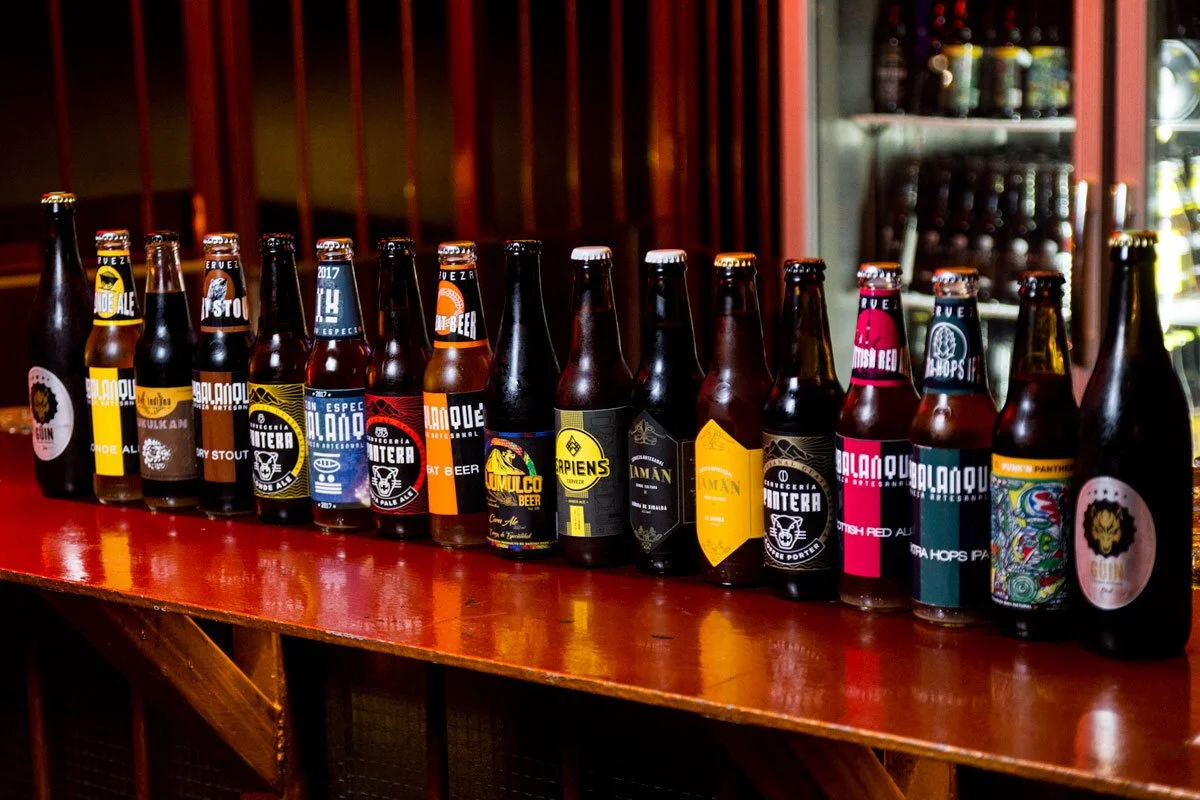PACRIM's Summary for Beer in Guatemala
Craft beer Guatemala
HEADLINES
Beer increases by 6% in total volume terms in 2019, to reach 400 million litres
Growth is driven by a wider product offer, growing interest amongst consumers and low unit prices
Domestic premium lager registers the strongest total volume growth of 7% in 2019
The average unit price increases by 3% in current terms in 2019
Cervecería Centroamericana remains dominant in beer in 2019, with a total volume share of 73%
Beer is expected to post a total volume CAGR of 5% over the forecast period, reaching 511 million litres in 2023
PROSPECTS
Growth in the Product Range and Rising Interest in Beer Drive Sales
Beer continues to see strong growth in Guatemala, which is being driven by two different trends. The first is low unit prices for economy products which cater to the lower-end of the market, where consumers have tight budgets and base their drinking decisions on unit prices rather than brand or taste preference. The second trend is targeted towards the middle to upper-end of the market, with a larger offer of premium domestic and imported beers. Also, consumers are beginning to see beer as a beverage that can be paired with different foods and are more interested in trying different beers, learning more about them and how to drink them properly.
Artisanal Craft Beer Is A Growing Niche
Artisanal craft beer has become a global trend, and is an emerging niche in Guatemala. In 2018 there were around 14 beer companies making artisanal beer in Guatemala, with many brand entries and exits. The first domestic brand, Principe Gris, was launched in 2014, which is sold mainly on-trade. There is also Club Cervecero, where artisanal beers are paired with gourmet dishes to offer consumers a complete experience. This trend is stronger amongst upper-income consumers, usually adults aged 30-40, who are becoming beer enthusiasts and are looking for more sophisticated flavours and brands of beer. All craft brewing companies are extremely small, and their sales are mainly directly through their own bars, or with alliances they have made with fashionable restaurants, such as Café Saul, which sells Principe Gris. Imported craft beer is also evident in Guatemala, such as El Cadejo from El Salvador. Artisanal beer is expected to remain a niche in Guatemala, but since it is in its initial phase, it still has strong growth potential.
The FIFA World Cup Drives Sales of Beer
Soccer is one of Guatemala’s most important sports, and the FIFA World Cup is the most watched event. In 2018, the FIFA World Cup was held in Russia, and was important for Guatemalans. They watched the matches at home, and often hosted parties, which was a strong driver of sales of beverages such as beer, since it is common to watch a soccer game whilst drinking beer. Sales were also driven on-trade, since watching football is common both at home and in bars and restaurants in Guatemala.
COMPETITIVE LANDSCAPE
Cervecería Centroamericana Leads Beer
Cervecería Centroamericana continued to lead beer in Guatemala in total volume terms in 2019. It is a domestic producer which has been operating in the country since 1886. The company has a wide product portfolio, with different beers to target different tastes and price levels. Its most important brands are Dorada Ice (economy) and Gallo (mid-priced), but it has several other popular brands, such as Monte Carlo and Cabro (premium) and Dorada Draft (mid-priced). Cervecería Centroamericana is a very active company in terms of marketing campaigns, sponsorship and new product launches, and has very strong distribution, which allows it to reach the entire country. The second company in beer in Guatemala in 2018 was AmBev Centroamérica, which also has a wide portfolio of imported and domestic beers. Its most important brands are Stella Artois and Corona Extra (premium), Modelo Especial (mid-priced) and Brahva (economy). AmBev is also taking advantage of the artisanal/craft trend in beer – importing premium brands such as Brooklyn.
New Product Launches
Beer is always a very active category in terms of new product launches in Guatemala. Probably the most important new product in 2019 was the premium beer El Zapote, which is produced by a microbrewery owned by Cervecería Centroamericana. The company entered the market in May 2019 with six different flavours: Scotch, American, Porter, IPA, Belgian and Weizen. These beers are distributed on-trade and off-trade in urban modern retail channels. The company also offers a free tour of its premises so that consumers can learn more about how the beer is made, see the factory and get a free tasting at the end. Consumers can also buy returnable glass bottles, that they can refill in the factory at a lower price. In January 2018, Cervecería Centroamericana also launched Gallo 502, a beer designed for young adults, with a fresh image that aims to relate consumers to Guatemala (502 is Guatemala’s area code).
Marketing Strategies Focus on Creating Experiences
Beer marketing strategies vary between the two leaders in beer – Cervecería Centroamericana and AmBev – but they both try to show consumers experiences of drinking beer. Cervecería Centroamericana usually invests more in its leading Gallo brand, and portrays it as a Guatemalan beer. AmBev on the other hand, tries to pair its Modelo Especial beer with different foods to show that it is the perfect dining companion. Both companies invest in music concerts and host parties, which are usually at the beach during Guatemala’s warm months, which are March and April (mainly during Easter week) and during New Year.
Craft beer guatemala pacrim distributors
CATEGORY BACKGROUND
A wide variety of beer brands are sold at different prices in Guatemala. For example, the most common are: Dorada Ice and Brahva (economy), Gallo, Dorada Draft and Modelo Especial (mid-priced) and Monte Carlo, Corona Extra, Cabro and Stella Artois (premium).
Premium - GTQ 30.00 - 39.99 per litre
Mid-Priced - GTQ 20.00-29.99 per litre
Economy - GtQ 10.00-19.99 per litre


